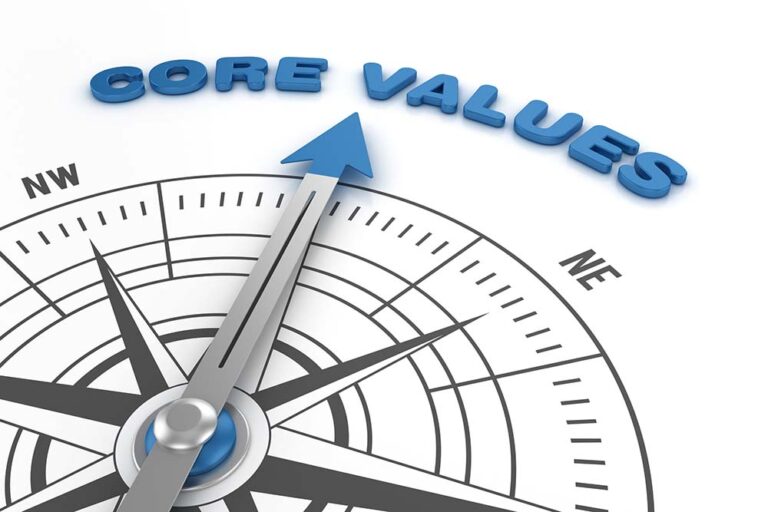Most leaders today agree that a commitment to diversity, equity, and inclusion is important to their organization.
A mid-2021 Harris Poll, conducted in partnership with Just Capital, found that 94% of large organization employers (500+ employees) say that their organization recently committed to advancing diversity, equity, and inclusion in the workplace. But significantly fewer workers believe their company has a formal DEI effort that is clearly defined and linked to organizational values and individual behaviors that will shape culture.
This indicates a substantial disconnect between words and actions. But it’s not surprising.
Saying that DEI is important is not the same as actively taking steps to improve or create a culture that can invite and retain different people or people with different skills. There are many ways to enhance the demographic and behavioral diversity within employee groups, with focus on inclusion and belonging. DEI should be evident in recruiting, hiring, supporting, and growing employees. It should be evident in how leaders communicate, create opportunities, structure teams, and invite constructive disagreement. And now, more than ever, we should see DEI in how an organization attracts, hires, develops, and retains employees. We should also see DEI in how it meets organizational goals, whether employees are hybrid, remote, in-person, and/or geographically dispersed.
I’m frequently asked to help organizations launch a DEI effort. But just as often, I’m called into companies where a DEI effort was planted but hasn’t grown. I’ve written before about why DEI efforts fail, but it’s equally necessary to discuss the leadership climate required for DEI success.
We should see DEI in how an organization attracts, hires, develops, and retains employees and meets organizational goals.
After helping numerous companies kickstart or reinvigorate efforts in this area, I know that four elements are essential to success. These apply not just to leadership, but also need to be present in how all employees communicate, interact and work with each other. If these qualities are not valued and practiced in your culture and in your organizational community, your DEI initiative won’t get very far.
The four key ingredients for a successful DEI launch are Trust, Candor, Humility, and Grace.
Trust is the foundation of all relationships. But what is trust in the context of DEI? Trust helps build healthy and dynamic relationships with co-workers and creates conditions where colleagues collaborate effectively in teams. Strong trust facilitates an environment that encourages employees to be authentic and able to admit mistakes. Trust is built in the workplace across three key dimensions:
- Integrity: Trust that team members will perform reliably and predictably, per cultural norms.
- Ability: Trust that team members are fully competent to perform their tasks.
- Empathy/Sympathy: Trust that team members genuinely care about each other’s well-being.
Candor is the ability of team members to speak openly and honestly in a meeting when it matters, no matter the colleague’s titles in the room. Candor is not speaking up to make someone look bad so that you look good. It is not harsh or demeaning. Candor is honesty delivered with compassion. When someone speaks candidly about an issue, there should be no retribution against this person, regardless of the subject.
Humility in the context of DEI is the ability to assume a learner’s demeanor. This means opening your mind to the perspectives, lived experiences, and different work styles of others to grow and increase your leadership capability.
Lastly, is Grace. Know that you and others will make mistakes, no matter how well-intentioned everyone is. Allow space to make these mistakes, recover and make amends. Those who don’t make mistakes aren’t really trying. Errors and blunders are often the paths to true understanding, and they can be great opportunities for learning and growth.
In one client setting, these essentials were absent from DEI. Corporation X launched a DEI effort in 2020, but it stalled within a year. I got the call to help move things forward. In my initial conversation with leadership, the answer to why the initiative stagnated became clear.
The CEO initially told a senior leader about his desire to see a focused DEI effort within the company. The senior leader took on the responsibility but viewed it as a personal mission that he alone needed to drive. Although the organization formed a diversity council, the senior leader did not leverage the individuals selected to serve on it. They have been left out of the conversation as the senior leader pushed through what he believed were the best next steps, which were solely task-oriented, not culturally transformational. Brandishing his executive status (lack of humility), the leader forged forward without taking in the opinions of others (no acceptance of candor), engaged in purely transactional DEI with a goal of making no mistakes (lack of trust) and not listening or trust the validity of lived experiences of others on the diversity council (lack of trust.)
DEI is no different from an overall vision for the future of a company… DEI is not transactional, but relational!
What happened to the CEO who started the initiative? He had been uninvolved. Delegating the effort to this senior leader, he didn’t engage further. No one on the diversity council heard from him and he did not address DEI in organizational speeches or messages. He also did not hold anyone accountable for developing behavioral expectations for leaders or individuals, creating a communications plan, or guiding the organization to leverage unique skills and collaborate to meet customer needs. With no communication happening amongst the individuals and groups that should have been connected to help guide and champion DEI, there was no avenue to trust, candor, humility, or grace.
Additionally, no one on the leadership team could answer my No. 1 question. Why did they believe they needed DEI? With no articulation of the “why,” leaders, task forces, and associates are directionless. No core belief could center and guide the process or shape desired outcomes. DEI is no different from an overall vision for the company’s future. It needs to excite and motivate team members to achieve something together for the greater good. DEI is not transactional, but relational!
Modeling one of the traits I believe is essential for effective DEI and healthy culture, I shared my feedback, speaking with candor.
I could not fix this for them.
But I could fix it with them.
In this case, we not only needed to start over with building a DEI foundation, but we also had ground to make up in creating a unified vision for success. In addition, we needed to establish lines of communication where the four essentials could take root.
Whether you are starting from the very beginning or had a start-stop experience with your DEI efforts to date, consider how Trust, Candor, Humility, and Grace can play a role in your approach to supporting a shared vision and achieving desired business results.
Another organization I am working with has taken this to heart. Here’s a quick snapshot of what they’re doing right. Corporation Z has a strong leader at its helm as CEO. This individual establishes trust daily by meaning what he says and doing what he promises. He is candid about the reasons for focusing on DEI, the “why.” And he notes that with the changes in our workforce – both demographically and behaviorally – it must be a priority for the organization to win in its industry. He makes the case relative to their core values, how individuals and leadership live the values, and how it will help them fulfill the organizational purpose.
Together, the leadership team acts with humility, asking for help from within and outside the organization to better understand the workplace needs and experiences of those with differing backgrounds, experiences, and approaches to work. As leaders and, subsequently, managers adopt new behaviors and practices in keeping with DEI goals, they remind each other to practice grace as they learn and grow.
The CEO of Corporation Z communicates messages about DEI in all his talks and companywide emails. Beyond that, he asks for those messages to be reflected back to him. This could take the form of feedback and suggestions. Or managers could demonstrate their understanding of what needs to happen next through improvements to hiring efforts or in how the organization deals with the tension that difference brings to every interaction. He makes others accountable, placing responsibility on the entire colleague community, rather than assigning an effort to one person. He is effectively creating change because he is requiring it from his team.
How do you know if your organization is ready to undertake DEI efforts with clearly defined goals and a desire to positively change your culture?
- You have a clear understanding of where your culture is strong or needs support to embrace a DEI effort
- You have a clear understanding of WHY you are doing this.
- You know WHAT the desired behaviors are for leaders and individuals to support your culture.
- You can develop a plan for HOW to move DEI efforts forward.
- You have leaders committed to building trust, giving and accepting candor, acting with humility, and providing space for grace.
The journey of DEI is paved with individual reflection and requires strong leadership capability. How you approach DEI within your organization depends on establishing a foundational “why” that is consistent with your values and has meaning for your business, your stakeholders, and your customers.








